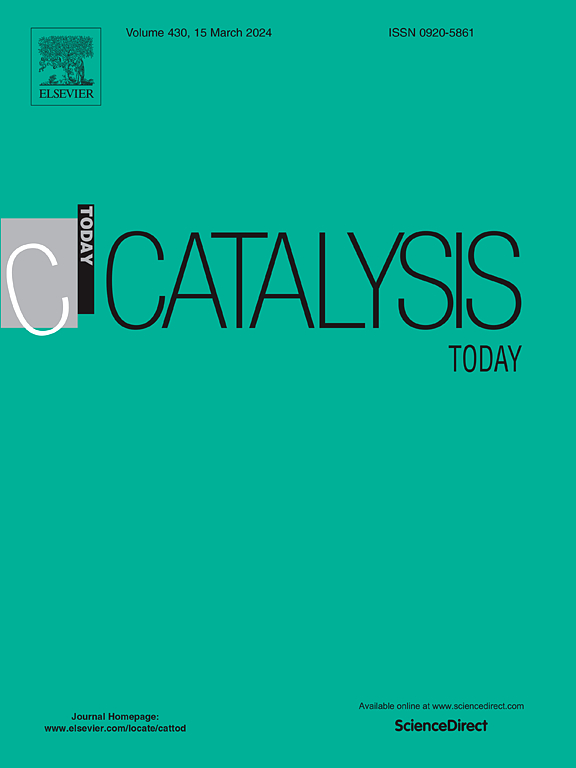Tailoring of single copper atoms anchored on N, P co-doped carbon for electrochemical CO2 reduction
IF 5.2
2区 化学
Q1 CHEMISTRY, APPLIED
引用次数: 0
Abstract
The electrochemical CO2 reduction reaction (CO2RR) is a promising strategy to convert the greenhouse gas CO2 into valuable products using electricity as a feedstock. This study presents the development of single-atom copper catalyst anchored on a nitrogen and phosphorus co-doped carbon matrix designed for CO2RR. The impact of carbonization temperature on the structural properties of the electrocatalysts, such as porosity and the electronic environment, was systematically examined, revealing its influence on the selectivity towards C1 and C2+ products. Increased microporosity was associated with an enhanced hydrogen evolution reaction (HER), whereas mesoporosity contributed to improved CO2 reduction reaction activity. Aberration-corrected transmission electron microscope evidenced that P addition improved the dispersion of Cu, whether in the form of single atoms or clusters. Moreover, phosphorus doping suppressed HER and promoted the formation of products such as methane, ethylene, and ethanol. The coexistence of Cu+, Cu0, and copper single atoms was identified as key to facilitating C-C bond formation. This study emphasizes the critical balance between textural and electronic properties in optimizing catalytic performance and provides valuable insights for designing advanced electrocatalysts for CO2 valorization.
单铜原子锚定在N, P共掺杂碳上的电化学CO2还原
电化学CO2还原反应(CO2RR)是一种将温室气体CO2转化为有价值产品的有前途的策略,以电力为原料。本研究开发了一种锚定在氮磷共掺杂碳基体上的单原子铜催化剂,用于CO2RR。系统考察了炭化温度对电催化剂孔隙率和电子环境等结构性能的影响,揭示了炭化温度对电催化剂对C1和C2+产物选择性的影响。微孔隙度的增加与析氢反应(HER)的增强有关,而介孔度则有助于提高二氧化碳还原反应的活性。像差校正透射电子显微镜证明,P的加入改善了铜的分散,无论是单原子还是团簇形式。此外,磷的掺杂抑制了HER,促进了甲烷、乙烯和乙醇等产物的生成。Cu+、Cu0和铜单原子的共存被认为是促进C-C键形成的关键。该研究强调了优化催化性能中结构和电子性能之间的关键平衡,并为设计先进的二氧化碳增值电催化剂提供了有价值的见解。
本文章由计算机程序翻译,如有差异,请以英文原文为准。
求助全文
约1分钟内获得全文
求助全文
来源期刊

Catalysis Today
化学-工程:化工
CiteScore
11.50
自引率
3.80%
发文量
573
审稿时长
2.9 months
期刊介绍:
Catalysis Today focuses on the rapid publication of original invited papers devoted to currently important topics in catalysis and related subjects. The journal only publishes special issues (Proposing a Catalysis Today Special Issue), each of which is supervised by Guest Editors who recruit individual papers and oversee the peer review process. Catalysis Today offers researchers in the field of catalysis in-depth overviews of topical issues.
Both fundamental and applied aspects of catalysis are covered. Subjects such as catalysis of immobilized organometallic and biocatalytic systems are welcome. Subjects related to catalysis such as experimental techniques, adsorption, process technology, synthesis, in situ characterization, computational, theoretical modeling, imaging and others are included if there is a clear relationship to catalysis.
 求助内容:
求助内容: 应助结果提醒方式:
应助结果提醒方式:


